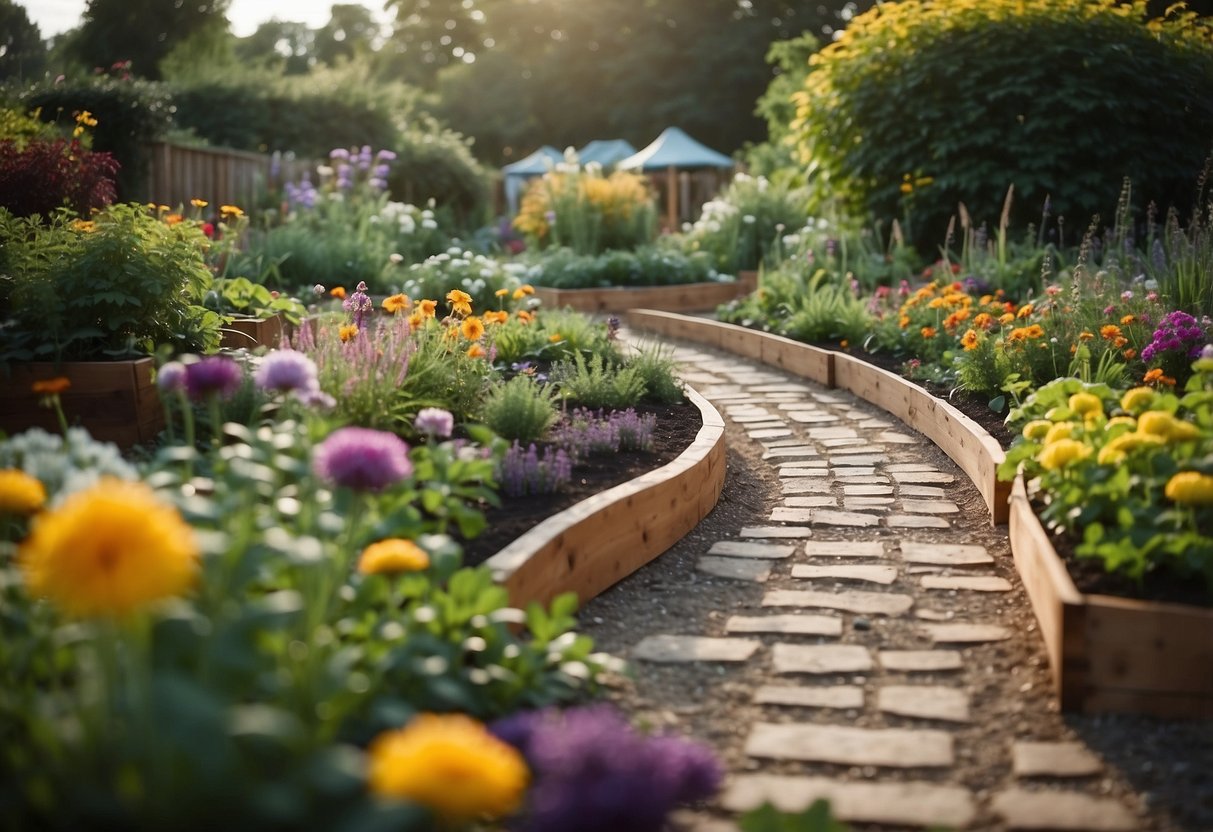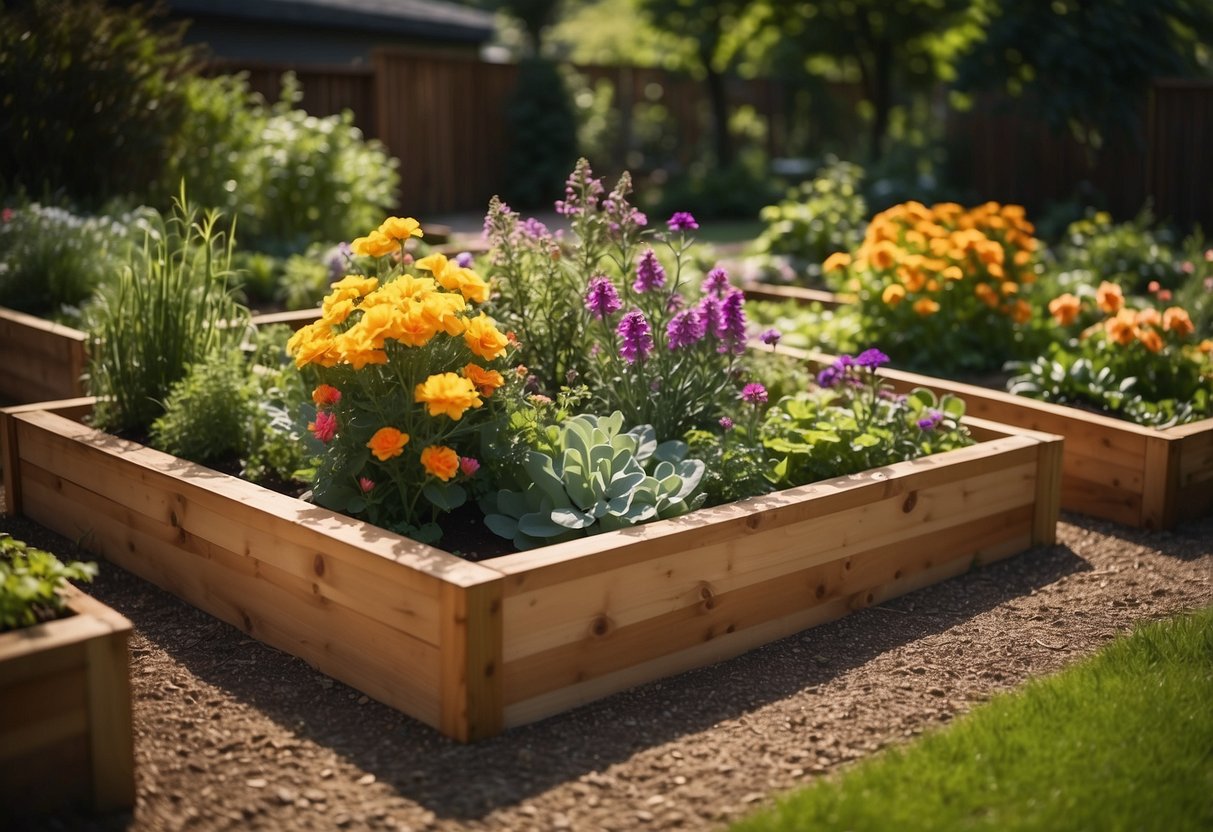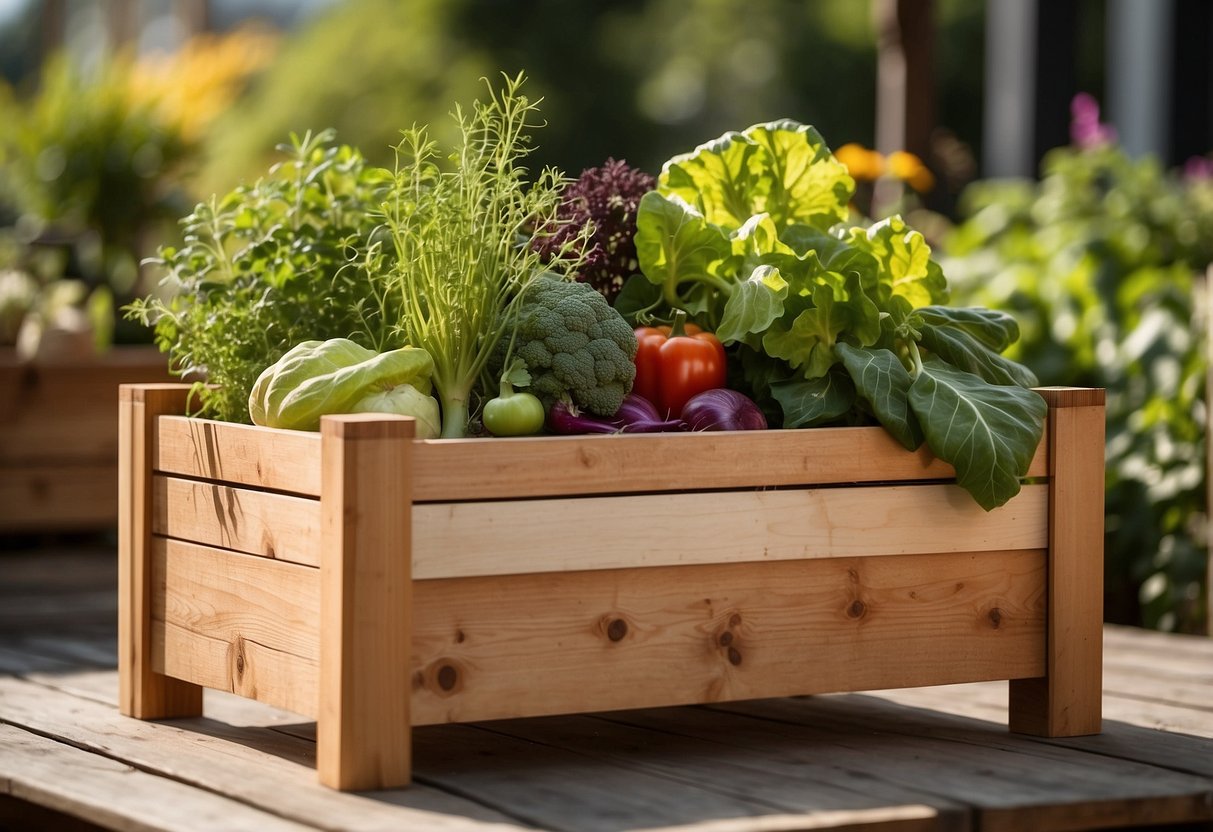Garden Ideas Raised Beds: Transform Your Outdoor Space with Simple Tips
Thinking about starting a garden with raised beds? You’re in the right place. Raised garden beds offer many perks like better soil drainage, easier access to plants, and the chance to customize your soil. These raised beds can also add a neat and organized look to your garden space.

Why should you consider raised garden beds? They make gardening more accessible, especially if you have trouble bending down. Plus, they let you control the soil quality better than traditional gardens. With many design options available, you can find one that fits both your style and your gardening needs.
1) Cedar Raised Garden Bed

Cedar raised garden beds are a great choice for any gardener. They are durable and naturally resistant to rot and insects.
Building a cedar bed is simple. You just need cedar boards and basic tools like a saw and a drill. You can find detailed steps on HGTV’s guide.
Cedar beds look beautiful in your garden and can last for many years with proper care. They’re perfect for growing veggies, herbs, and flowers, providing a charming and functional space.
2) DIY Pallet Planter Box

Building a pallet planter box is a fun and inexpensive way to start gardening. You can find pallets for free or at a low cost. Look for sturdy, untreated pallets to ensure they’re safe for your plants.
Start by breaking down the pallets into individual planks. Use a reciprocating saw to cut through the nails, separating the boards. This will give you the wood needed to build the sides and bottom of your planter box.
Attach the planks together using 2x4s for the corners. Secure the sides to each other with screws, making a rectangular shape. Don’t forget to put a plastic liner inside to help with water retention and soil containment.
Finally, fill your DIY planter box with soil. Add compost or fertilizer for extra nutrients. This setup will give your plants a great foundation to thrive. Happy gardening!
3) Galvanized Steel Raised Beds

Galvanized steel raised beds are a great pick for your garden. They are resistant to rust and very durable, ensuring they last for years. The steel reflects heat, creating an ideal temperature for your soil.
You can also find important tips and plans on how to set up these beds here. The setup process includes securing rails with screws, making it sturdy and reliable.
4) Tiered Herb Garden

A tiered herb garden adds style and function to your space. With two or more levels, you can grow more herbs in a smaller area. Each level can support different kinds of herbs, making it easier to manage.
This design not only looks great but also makes use of the vertical space. It’s perfect for small backyards or patios. Learn how to build a two-tier garden bed to get started.
Remember to consider the soil depth for your herbs. Most herbs need at least a foot of soil, so plan accordingly!
5) Vegetable Planter Box

A vegetable planter box is a great way to grow your own fresh veggies at home. You can control the soil quality, which means healthier plants.
A raised planter box also reduces the need to bend over, making it easier on your back. They’re perfect for small spaces and can be placed on patios or balconies.
For a simple design, check out free DIY raised planter box plans that can help you get started quickly and easily.
6) Concrete Block Raised Bed

A concrete block raised bed is easy and affordable to build. These blocks are sturdy and durable, making them a great choice for your garden.
You can arrange the blocks in various shapes to fit your space. They also provide excellent drainage for your plants.
Stacking the blocks lets you create a deeper bed, perfect for root vegetables like carrots. You can also grow herbs and flowers in the small holes of the blocks. This design is not only practical but also stylish. For more ideas, check out these raised garden bed designs.
7) Reclaimed Wood Raised Bed

Using reclaimed wood for your raised garden bed can save you money and make your garden eco-friendly. Gather materials like old pallets or deck boards.
These wood pieces can be repurposed into a charming bed for your plants. You might need basic tools like a saw, hammer, and nails. Building with reclaimed wood not only recycles old materials but also adds a rustic look to your garden.
Instructions for raised beds from reclaimed wood can guide you through the process.
8) Vertical Garden Planter

Adding a vertical garden planter to your raised bed is a smart way to use space. It helps you grow more plants without needing extra ground area. You can attach planters to a wall or set up a wood slat fence with planters.
Vertical gardening works great for small gardens. It keeps your plants well-organized and easier to reach. Plus, it can look really cute in your backyard! Make sure your soil is well-prepared with compost or well-rotted manure for best results.
Check out this guide on vertical gardening for more ideas.
9) Stone Raised Beds

Stone raised beds add a timeless look to any garden. They are durable and naturally beautiful, blending well with outdoor settings. You can use stone to create a warm and welcoming patio area, perfect for growing flowers, vegetables, and other plants.
Using stone raised garden beds can provide a rustic yet elegant feel to your backyard. They also offer better control over soil drainage and help keep pests away from your plants. Stone beds are a charming and practical choice for any gardener.
10) Elevated Wooden Planter

An elevated wooden planter is a great option for small spaces. You can grow flowers, herbs, or vegetables in it. These planters are easy for anyone to use because they are raised off the ground.
You don’t have to bend over as much, making gardening less of a strain. Consider using cedar wood, which is durable and good for outdoor use.
Adding a trellis can help support climbing plants like tomatoes or cucumbers, giving your garden a nice focal point. For more ideas, check out this raised garden bed post from The Spruce.
Benefits Of Raised Garden Beds

Raised garden beds offer numerous advantages that can improve your gardening experience. They help with soil quality, ensure better drainage, and provide easier access for maintenance.
Improved Soil Quality
Using raised garden beds lets you control the soil quality more effectively. You can customize the soil mix, adding compost, organic matter, and other nutrients as needed. This helps create ideal conditions for plant growth.
Moreover, raised beds prevent soil compaction. When you don’t have to walk on the soil bed, the roots have an easier time growing. Also, the confined space makes it easier to keep the soil healthy year after year.
Fewer weeds and better control over pests are other perks, as pests may find it harder to invade a raised garden. This means healthier plants and greater yields.
Better Drainage
Raised beds excel in water drainage. Water flows more easily through the soil, reducing the risk of waterlogging. This is particularly helpful for plants that don’t tolerate standing water well.
You have more control over watering. Raised beds tend to dry out faster than in-ground gardens, allowing you to water as needed. This helps avoid root rot and other water-related issues.
Adding a layer of gravel or sand at the bottom can improve drainage further. This setup mimics a natural environment where roots can spread and access water efficiently.
Ease Of Access
One major benefit is the ease of access. Raised beds are elevated, so you don’t have to bend down as much, which is easier on your back and knees. This is especially helpful for older adults or those with limited mobility.
You can build the beds to your preferred height, making gardening more comfortable. Some raised beds even come with seating options or can be built with railings for support.
Maintenance tasks such as weeding, planting, and harvesting become simpler and quicker. You’ll find that attending to your garden is less tiring and more enjoyable.
Design Considerations

When planning your raised garden beds, it’s important to think about the right location, materials, and the size and shape that will best suit your needs. This will help ensure your garden is both functional and enjoyable.
Choosing The Right Location
Start by finding a spot that gets plenty of sunlight, ideally around 6-8 hours a day. Plants like tomatoes and peppers thrive in full sun. Consider proximity to a water source as well. You don’t want to haul heavy watering cans across your yard.
Look for well-drained soil to avoid waterlogging your plants. If your yard tends to be soggy, a raised garden bed can help by lifting plants above the damp ground.
Wind protection is another factor. If your spot is too windy, your plants might get damaged. You can use fencing or plant windbreaks like shrubs.
Selecting Materials
Wood is a popular choice for raised beds. Cedar and redwood are naturally rot-resistant, making them great options. If you’re on a budget, untreated pine works too, though it won’t last as long.
Concrete blocks or bricks are other durable choices. They can create a more permanent structure and are resistant to weathering.
For a more unique look, consider using materials like galvanized metal or woven willow. These can add a decorative touch to your garden while still being functional.
Avoid using pressure-treated wood or old railroad ties as they can leach chemicals into the soil, harming your plants.
Size And Shape Options
The size of your raised bed will depend on how much space you have and what you want to grow. A typical bed is around 4 feet wide. This allows you to reach the center of the bed from either side without stepping on the soil.
Height is another consideration. Most raised beds are 12 to 18 inches tall. If you have mobility issues or want to reduce bending, you can go taller.
As for shape, rectangular beds are the most common and efficient. However, don’t feel limited! Square, L-shaped, or even circular beds can add visual interest and make the best use of your space.
Experimenting with different configurations can help you find the perfect fit for your garden.
Maintenance Tips For Raised Beds

Keeping your raised bed garden healthy involves several important tasks. Regular soil amendments, proper watering practices, and effective weed control will help ensure your plants thrive.
Soil Amendments
Adding fresh compost or topsoil to your raised beds is essential. Every year, you should mix in compost to replenish the nutrients lost due to plant growth. This keeps the soil rich and fertile.
Also, consider using organic materials like manure or leaf mold. They provide essential nutrients and improve soil structure. Mulching is another great practice. Apply a 2-3 inch layer of mulch to retain moisture and add organic matter as it decomposes.
Watering Guidelines
Proper watering is crucial for a successful garden. Raised beds tend to dry out more quickly than in-ground gardens, so daily monitoring is important.
Use a soaker hose or drip irrigation system to ensure even watering, which prevents overwatering and reduces the risk of disease. Morning is the best time to water your garden, as this allows leaves to dry before evening, reducing the chance of fungal diseases.
Weed Control Strategies
Weed control helps reduce competition for nutrients and water. Covering the bottom of your bed with a layer or two of cardboard, as mentioned in various gardening tips, helps prevent weeds from sprouting.
Regularly hand-pull weeds or use tools like a hoe or cultivator to remove them. You can also use mulch or fabric weed barriers to suppress weed growth. Staying on top of weeds will keep your garden bed neat and your plants healthy.
By focusing on these key tasks—amending soil, following proper watering guidelines, and managing weeds—you’ll keep your raised garden beds flourishing and productive.







